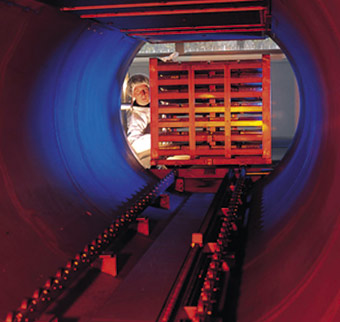Safety first
The appropriate handling and use of local anaesthetics in dentistry by Martin Foad, Regulatory Affairs Manager Septodont Ltd
Local anaesthetics are one of the staple tools in any dentist’s armamentarium and, as such, the safe use and handling of them is essential to ethical dental practice. Anaesthetics are used in thousands of patients every day to minimise pain and discomfort during dental procedures and, although they are safe, every dental practitioner has a duty of care to ensure he or she is using and storing them in the correct way, to minimise the risks to their patients. We take a look at some of the most important considerations to take into account when using local anaesthetics in dentistry.
Are local anaesthetic cartridges considered sterile or not?
All empty cartridges are sterilised in a large industrial vacuum autoclave before being filled with the local anaesthetic solution. The cartridges are then moved into a Sterile Class 1 area for filling. Once loaded and sealed, the contents are under a slight negative pressure. Once filled, the anaesthetic cartridges are subject to classical sterilisation by autoclaving (121°C – 15min) to ensure the sterility of the anaesthetic solution. After sterilisation, the anaesthetic cartridges are then moved to the packaging area. This is a clean area, not a sterile area. At this stage the outsides of the cartridges are considered clean, but no longer sterile.
Latex free?
Latex allergies are a big factor to consider with local anaesthetics. In much the same way as traces of nuts in food can cause severe reactions in people with nut allergies, even a small amount of contact with latex could potentially contaminate a product and could make it dangerous for some patients. As such, dental anaesthetic manufacturers should provide assurance that their products are 100 per cent latex free, that is they have not come into contact with latex at any point during their production, this will guarantee the highest level of safety possible for your patients.
Storage of local anaesthetic cartridges
Local anaesthetic cartridges should always be kept in their original packaging, to protect the local anaesthetic from daylight. They should be stored at room temperature (between 8°C and 25°C).
They should not be frozen or placed in a refrigerator. Exposure to daylight and unfavourable temperatures may cause increased deterioration of the anaesthetic solution and/or the other drug component parts.
Loading local anaesthetic syringes
Only load local anaesthetic syringes just before use. When a local anaesthetic needle is inserted into a local anaesthetic cartridge, the high-grade surgical stainless steel needle comes into contact with the drug inside. Only attach the needle just before use to avoid oxidisation, which would cause contamination of the solution. Sterile single-use anaesthetic needles are sealed with a paper strip.
When the needle package is opened to attach the needle to the syringe, the paper seal is broken. There is then a risk of cross- contamination when the needle is left attached to the syringe.
Disinfection before use
Local anaesthetic cartridges can be chemically disinfected just before use, using a bactericidal wipe saturated with at least 70 per cent isopropyl alcohol. Many commercially available brands of rubbing alcohol, as well as solutions of ethyl alcohol not of USP grade, contain denaturants that could damage the seals or plungers and, therefore, are not to be used.
Submerging cartridges in sterilisation solutions
Local anaesthetic cartridges must not be submerged in sterilisation solutions. When submerged in disinfectant or alcohol solutions, the negative pressure inside the cartridge may draw the solution into the local anaesthetic.
This can result in swelling and oedema, or other adverse effects, after the local anaesthetic has been injected into the patient.
Certain metallic ions (mercury, zinc, copper, etc.) have been related to swelling and oedema after local anaesthesia in dentistry.
Therefore, chemical disinfectants containing or releasing these ions are not recommended. Antirust tablets or solutions that may be included in some disinfecting preparations may contain sodium nitrite or similar agents that may be capable of releasing metal ions.
Because of this, aluminium sealed cartridges should not be kept in such solutions.
Autoclaving
Local anaesthetic cartridges must also not be autoclaved. The seal and aluminium are used to close one end of the cartridge and a plunger is used at the other end.
Neither closure system can withstand autoclaving temperatures or the change in pressure. The sealing components at each end may become distorted or even dislodged as a result and cause leakage when patients are being injected. Due to the rise in temperature during autoclaving, the local anaesthetic solution may deteriorate.
Cartridge warmers
It is not recommended that cartridge warmers be used. The rise in temperature causes the local anaesthetic to deteriorate.

